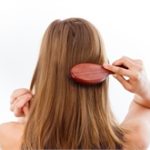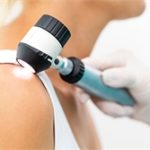
Solar lentigines, also known as age spots, sun spots, or liver spots (because of their brown color), become more visible with age and often appear as dark brown spots on the face and hands. They occur on areas of the skin most commonly exposed to the sun. Prevention and treatment can lead to both healthier and better-looking skin.
Prevention of Age Spots
- Use adequate sun protection. Always wear a sunscreen with UVA and UVB broad spectrum protection and an SPF of at least 30. Sunscreen should be worn year-round and applied 15 – 30 minutes before sun exposure. Reapply once every two hours, or more often if you are sweating a lot or swimming.
- Avoid prolonged sun exposure. Avoid long periods outdoors when the sun’s rays are the strongest – typically between 10 a.m. and 4 p.m.
- Wear protective clothing. UV-blocking clothes are an excellent choice for prolonged exposure. For other outdoor activities, choose clothing that covers your arms and legs along with a large hat and sunglasses.
Treatment of Age Spots
Several treatment options are available for solar lentigines. Prescription bleaching creams can lighten the appearance of spots. Intense Pulsed Light Photorejuvenation treatments are beneficial. Laser therapy is commonly used for more intense age spots to help diminish their visibility and leave the skin looking healthier.
If you have health concerns about dark spots or dislike their appearance, have your age spots evaluated by one of the qualified dermatologists at the Dermatology Associates Medical Group. Learn more about your treatment options by calling 310-626-4631 for a consultation.


